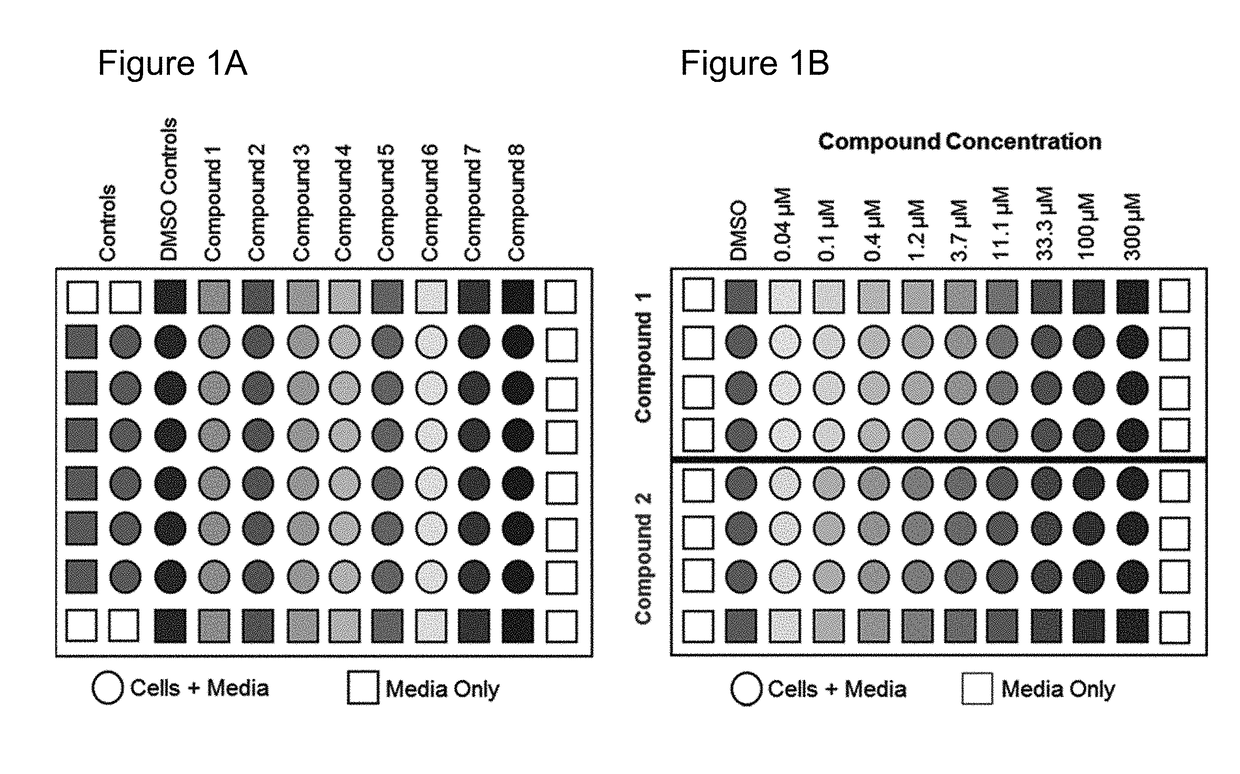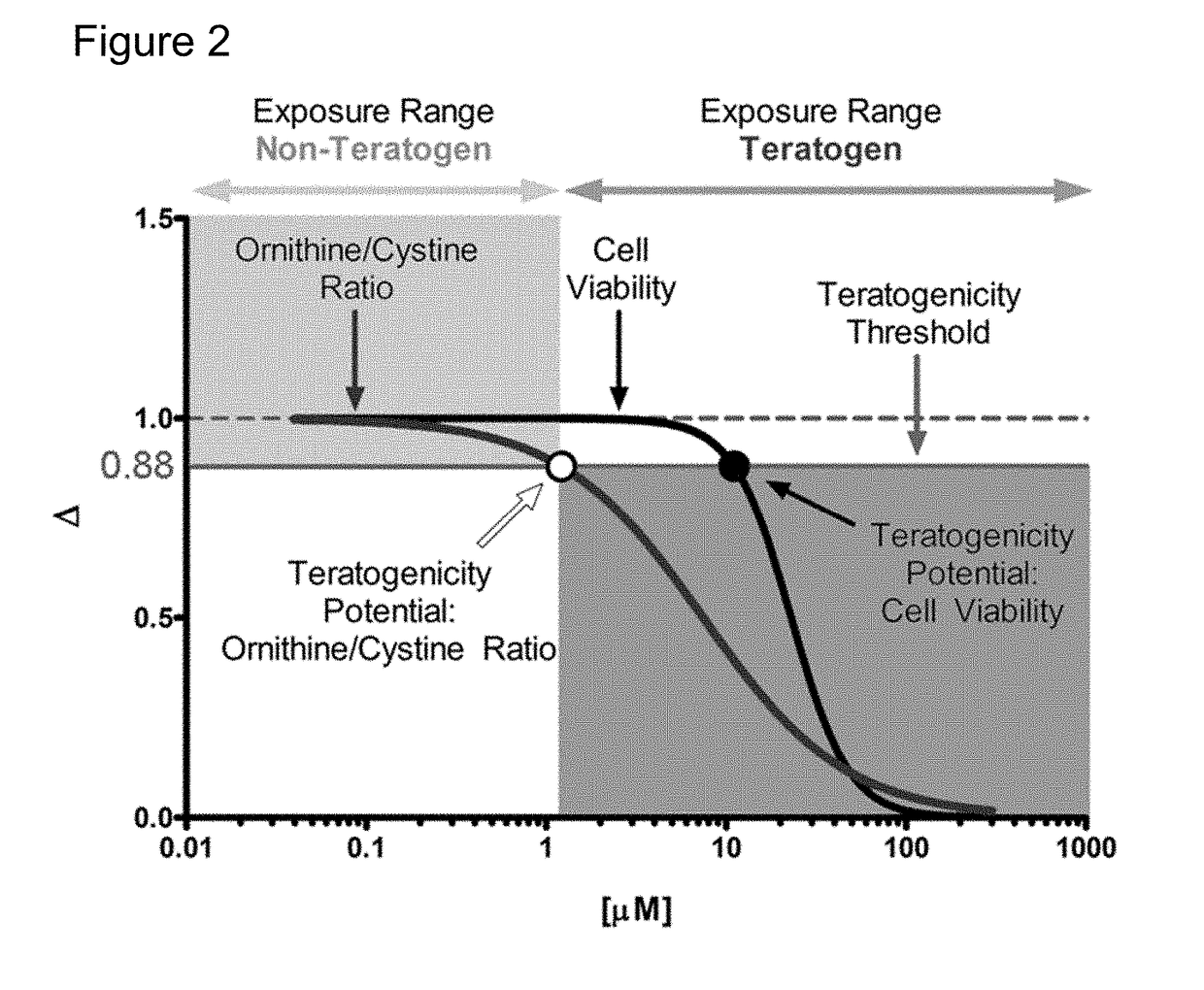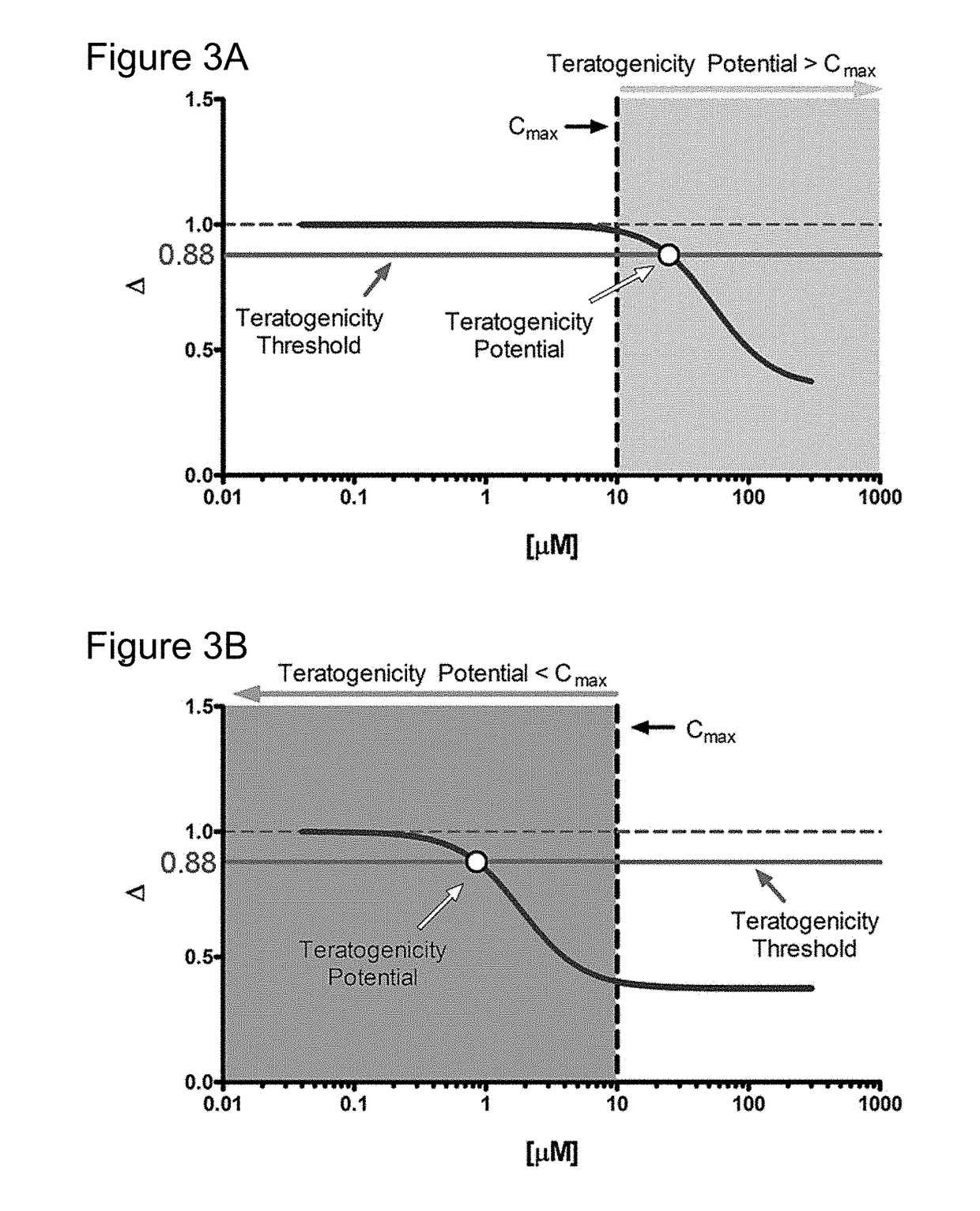Predicting human developmental toxicity of pharmaceuticals using human stem-like cells and metabolomic ratios
a technology of human stemlike cells and metabolomic ratios, which is applied in the direction of material analysis using wave/particle radiation, instruments, skeletal/connective tissue cells, etc., can solve the problems of cognitive disorders, difficult evaluation, and robust and efficient models
- Summary
- Abstract
- Description
- Claims
- Application Information
AI Technical Summary
Problems solved by technology
Method used
Image
Examples
example 1
Establishment and Assessment of a New Human Embryonic Stem Cell-Based Biomarker Assay for Developmental Toxicity Screening
[0104]With this example a metabolic biomarker-based in vitro assay utilizing human embryonic stem (hES) cells was developed to identify the concentration of test compounds that perturbs cellular metabolism in a manner indicative of teratogenicity. This assay is designed to aid the early discovery-phase detection of potential human developmental toxicants. In this study, metabolomic data from hES cell culture media was used to assess potential biomarkers for development of a rapid in vitro teratogenicity assay. hES cells were treated with pharmaceuticals of known human teratogenicity at a concentration equivalent to their published human peak therapeutic plasma concentration. Two metabolite biomarkers (ornithine and cystine) were identified as indicators of developmental toxicity. A targeted exposure-based biomarker assay using these metabolites, along with a cyto...
example 2
ADMA / Cystine Ratio
[0155]With the present invention, it has been determined that the analysis of data obtained from a small number of metabolites can serve as very accurate predictors of teratogenicity. As described in Example 1, an algorithm was developed that evaluated the individual predictive capacity of these secreted features and media components with the training set to identify and confirm several key features that could be used to develop a much simplified predictive model. The selection process weighted the predictive capacity of a feature, overall intensity, and peak shape to identify very well behaved features / metabolites that could be measured by targeted LC-MS or even by other detection systems. Several pairs of features and some individual features were identified that could accurately identify at least 90% of the teratogens and non-teratogens in the training and test sets that were used for the development of the devTOX computational models.
[0156]In this example, cyst...
example 3
Cystathionine / Cystine Ratio
[0158]Following procedures as described in the previous examples, it was also determined the determination of cystathionine / cystine fold change ratios also provide excellent predictivity and general performance in the rapid teratogenicity screen described herein. This is shown in FIG. 10. In FIG. 10, grey color with triangle glyphs represents teratogens, black color with circle glyphs represents non-teratogens, grey vertical line is threshold of teratogenicity, crosshair glyphs mark the sample medians, grey horizontal line is the median absolute deviations, and black vertical line designates 1.0.
PUM
| Property | Measurement | Unit |
|---|---|---|
| molecular weight | aaaaa | aaaaa |
| molecular weight | aaaaa | aaaaa |
| molecular weight | aaaaa | aaaaa |
Abstract
Description
Claims
Application Information
 Login to View More
Login to View More - R&D
- Intellectual Property
- Life Sciences
- Materials
- Tech Scout
- Unparalleled Data Quality
- Higher Quality Content
- 60% Fewer Hallucinations
Browse by: Latest US Patents, China's latest patents, Technical Efficacy Thesaurus, Application Domain, Technology Topic, Popular Technical Reports.
© 2025 PatSnap. All rights reserved.Legal|Privacy policy|Modern Slavery Act Transparency Statement|Sitemap|About US| Contact US: help@patsnap.com



